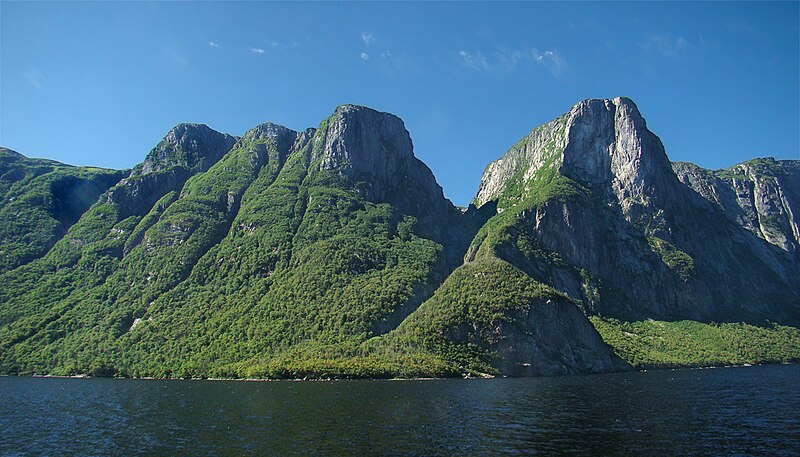The Gaspésie is probably the most scenic and rugged terrain along the entire Appalachian Trail. The higher summits contain numerous cold, nonglacial (periglacial) features related to both past and current permafrost conditions. I was lucky enough to be be included in an investigation to observe and study its alpine periglacial environment. Lobster hoagies sold along the road are outstanding, especially when washed down with one of the Unibroue Belgian-style ales. Poutine (fries topped with grease gravy and cheese curds) and sugar pie are a must. Bob, the locals speak an old French dialect, so communication can be rough – at least for me.
Although the McGerrigle and Chic-Choc Mountains abut each other, their geologies are strikingly different. The mean annual air temperature at Mont Jacque-Cartier’s summit (4,160 ft a.s.l.) is estimated at 23.9ºF so higher elevations are still underlain with the thickest and most extensive permafrost bodies in the Appalachian region. The last remnants of southernmost caribou herds are found here. Their range once extended south to New York, Vermont, and New Hampshire, and even here the numbers are declining quickly.
(Above) Islands of stunted Krummholz (Black Spruce on this mountain) hundreds of years old dot the timberline of Mont Jacque-Cartier. Parklike tundra was present in South Jersey during the Pleistocene, although we were likely even more sparsely vegetated during the most rigorous periods. I was lucky to catch a caribou in the background of this photo!
(Above) Atop Mont Jacques-Cartier are stone stripes, a type of patterned ground attributed to frost-induced movements within the active layer above permafrost. You can see similar features along higher elevations of the northern Appalachians, even in NJ – just not as well developed.
(Above) Mont Albert’s peak is slightly lower in elevation than Jacque-Cartier’s. It is a wetter environment. Mt. Albert is covered by a damp, organic-rich layer that supported lush serpentine alpine tundra.
(Above) It is a rugged climb through the sub-alpine zones. Serpentine barrens like this are scattered through the Appalachian. Their soils are sterile and unproductive so possess unusual flora. Northern serpentines are particularly distinctive, as they have only recently been exposed from glacial cover.
It is well worth the extra effort it takes to get to the Parc de la Gaspésie!
S-M






